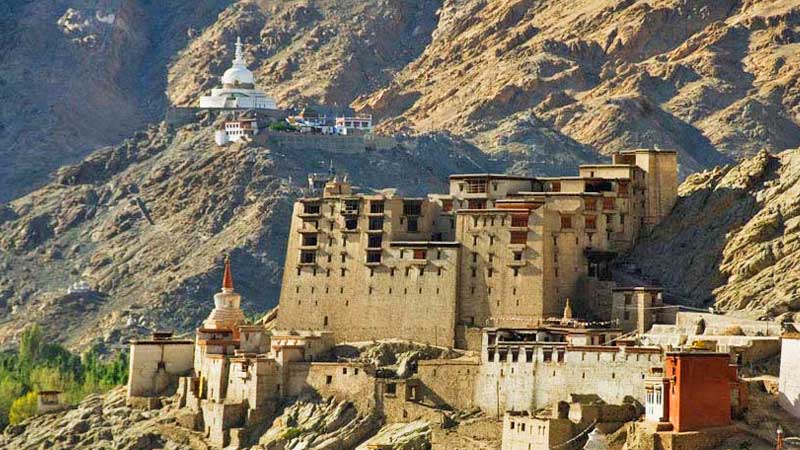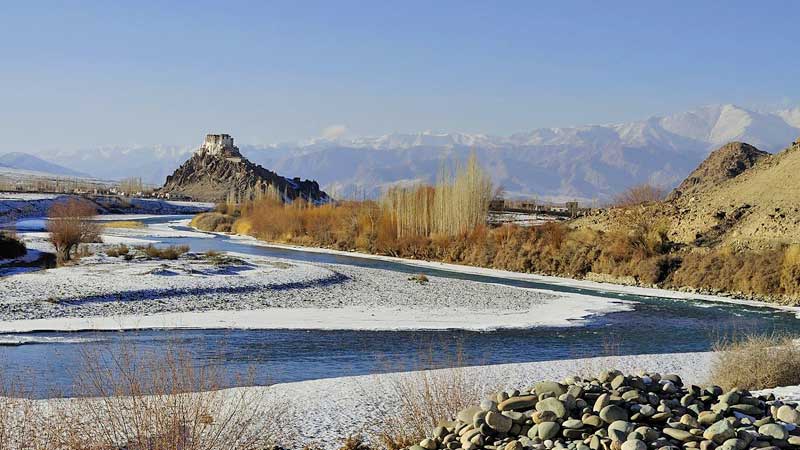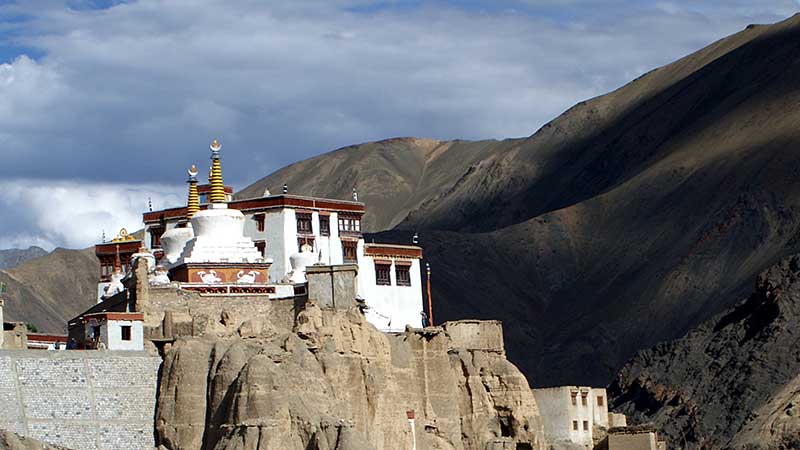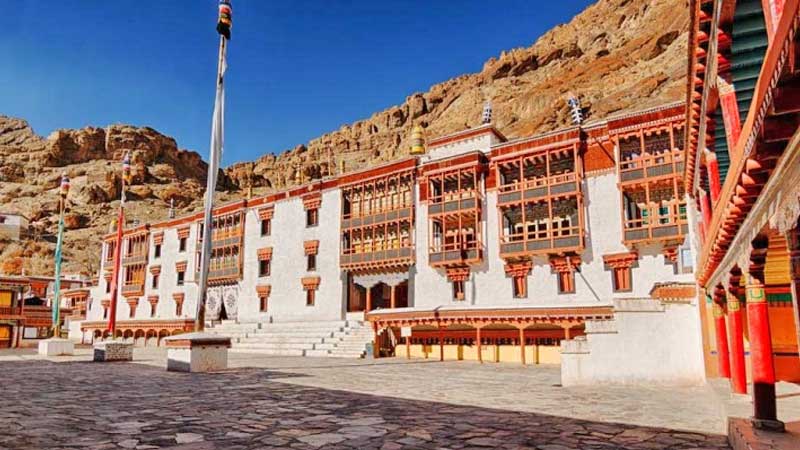
Ladakh Cultural Explore
09 Nights / 10 Days
Delhi - Leh - Ladakh - Tibetan Camp - Leh - Phyang - Alchi - Ridzong - Lamayuru - Likir - Leh - Khardong La - Hundar - Leh - Delhi
Overview
Ladakh Cultural Explore
Tour Itinerary
Day 1 Arrive Delhi
Begin your tour
Arrive into Delhi
Welcome to Vardhman's "Ladakh Cultural Explore"
On arrival at Delhi, you will be met and transferred by Vardhaman's representative to the hotel. Freshen up and then proceed for the sight seeing trip of Delhi visiting Humayun's Tomb, the Qutub Minar, the Red Fort and the great Jama Masjid - the biggest mosque in India.
Humayun's Tomb: It was built by the emperor's grieving widow, Haji Begum, in 1565 AD. Constructed with red sandstone it marked the beginning of a new tradition of ornate style which culminated in the Taj Mahal of Agra. Designed by the Persian architect, Mirza Ghyas, Humayun's Tomb shows a marked shift from the Persian tradition of using coloured tiles for ornamentation. Located in the midst of a large square garden, screened by high walls, with gateways to the south and west, the tomb is a square tower surmounted by a magnificent marble dome, 140 feet from the base of the terrace and is topped with a copper pinnacle. The complex also houses remains of Humayun and the grave of many other distinguished members of the Mughal dynasty.
Qutub Minar: It is one of the tallest and famous towers in the world. 234 feet high and the highest individual tower in the world. It has a number of floors or storeys which has beautiful carvings . There are inscriptions all round the tower which reveal that Iltutmish finised the tower. The structure of the wall is made as such that it widens from top to bottom, just to make the minar stronger.
Red Fort: It is made up of red sandstone. Its walls have withstood the vagaries of time and nature. It rises above a wide dry moat in the northeast corner of the original city of Shahjahanabad. Its walls extend from two kilometers and vary in height from 18 metres on the river side to 33 metres on the city side.
Jama Masjid: It is the largest mosque in India, built between 1644 and 1658. It is one of the last architectural works of the Mughal emperor Shah Jahan. Its spacious courtyard holds thousands of devotees. Located on a mound in the heart of the old city , it projects beautifully into the Old-Delhi skyline. It was built in red sandstone and marble by more than 5000 artisans. It stands at the center of the erstwhile capital city of the Mughals, Shahjahanbad.
Optional : Sound and Light Show / Dances of India
Overnight: Hotel
Day 2 Delhi - Leh
This morning after breakfast, transfer to the Delhi airport to board the flight for Leh (3500 m by plane).
On arrival, you will be met and transfer to the hotel by our representative. Freshen up and then visit the palace and the gompa of Leh and the Stock royal palace.
Stock Palace and Monastery: 15 Kms South of Leh at the West Bank of river Indus is the Royal Palace dating from the 1840s when the invading Dogra forces deposed the king of Ladakh. The Palace is a rambling building where only a dozen of the 80 rooms are used. The Palace Museum (3 rooms) is worth visiting. It is a show piece for the royal thankas (many 400 years old), crown jewels, dresses, coins, peraks encrusted with turquoise and lapis lazuli as well as religious objects. The monastery founded by Lama Lhawang Lotus in 14th century, a short distance away, has some ritual dance- mask (Guru Tseschu) held on the 9th and 10 th day of the Ist month of Tibetan calendar.
Stok Palace Museum: 17 km from Leh town, this museum exhibits precious stones, thangkas, coins, royal crowns and dresses and prayer instruments.
Thiksey Gompa: It is situated at a distance of approximately 18 km from the town of Leh and belongs to the Gelukpa Order of Buddhism. Sherab Zangpo of Stod got the Thikse Monastery built for the first time, at Stakmo. However, later Spon Paldan Sherab, the nephew of Sherab Zangpo, reconstructed the monastery in the year 1430 AD. The new monastery was sited on a hilltop, to the north of Indus River.It has a temple, known as Lakhang Nyerma, built by Rinchen Zangpo, the Translator, dedicated to Goddess Dorje Chenmo. A huge temple in its time, today it stands mostly in ruins. Also there are a number of other sacred shrines inside the monastery complex. The monastery also has a rich collection of numerous valuable artifacts and ancient relics.
Hemis Monastery: It holds the distinction of being the biggest as well as the wealthiest monastery of Ladakh. It dates back to the year 1630 and was founded by the first incarnation of Stagsang Raspa Nawang Gyatso. Hemis Monastery is positioned inside a gorge, at a distance of approximately 47 km from Leh. Belonging to the Dugpa Order, it stands on the western bank of the Indus River. The monastery also boasts of a very rich collection of ancient relics.The Hemis Monastery also serves as the venue of an annual festival, known as the Hemis Festival. This festival is celebrated as a commemoration of the birth anniversary of Guru Padmasambhav.The Thanka is the sacred appliqué-work tapestry wrought with pearls, which depicts Guru Padmasambhava. And not to be forgotten is a sacred mask dance that is performed at the monastery every year. The dance takes place on 9th and 10th day of the fifth month of the Tibetan calendar.
Shey Gompa: It is situated on a hillock, at a distance of approximately 15 km to the south of Leh town. The monastery was erected on the instructions of King Deldon Namgyal, in the memory of his late father, Singay Namgyal. The main image inside the Shey Monastery is that of Buddha Shalyamuni. It is a huge image of the seated Buddha and is considered to be the biggest metal statue and the second largest Buddha statue in the Ladakh region. Copper sheets, gilded with gold, make up this amazing Buddha statue. The image also contains sacrificial offerings such as grain, jewels, holy signs and mantras inside it.
Overnight: Hotel
Day 3 Tibetan Camp
Morning after breakfast, visit Spitok monastery and the Tibetan Camp of Choglamsar (Car). These two days of visit are an excellent opportunity to get acclimatized for the Khardong La.
Spituk Monastery: It is located on a high hill overlooking the Indus river about 18 Km from Leh. The Spituk monastery has a wide collection of Buddhist artifacts and for the Spituk festival held from the 17th to 19th days of the 11th month of the Buddhist calendar. Further up the hill is a Mahakal Temple, where an image of Vajrabhairava is unveiled once a year at its annual festival.
Choglamsar: It is situated on the bank of Indus river. The new Tibetan refugee camp just off the main road from Leh is an important center for Tibetan Culture, History and Buddhism. Tibetan children village has library, Medical center, Traditional Handicraft shop and study center. Around one Km from TCV towards Hemis is the central Institute of Buddhist studies. It's the study center for Tibetan Buddhism and Ladakhi culture has Tibetan painting and sculpture school, library with good collection of books.
Overnight: Hotel
Day 4 Leh - Phyang - Alchi
This morning after a sumptuous breakfast, visit Phyang monastery and its picturesque village. Then, continue onwards to Alchi monastery, famous for its massive statues of Buddha, its wood carving and Cashmere wall paintings.
Phyang<: It is situated on the Leh - Kargil Highway 24 kms. west of Leh. The place has got a gompa that belongs to the 15th Century. Built by king Tashi Namgyal, the gompa subscribes to Kagyupa Order. The gompa has got tall walled building and houses 50 Prigungpa Lamas. The Dukhang has got 3 silver chortens out of which one has got seven eyed coloured Dezi stone. This stone is believed to be highly auspicious and was brought from Tibet by a former Head Lama. Gonkhang enshrines a furious veiled protector Deoty and also has a great collection of weapons and armours used during the Mongolian invasion of 14th Century. Phyang is also well-known for its annual festival which is the second largest festival in Ladakh. Phyang Tsedup festival formely used to be held during the winters, but recently it has been rescheduled with the tourist season and is celebrated during the month of July - August. During the festival, one can witness the Chaam dances and exposition of Giant 10 mtrs. broacade Thangka.
Alchi: It is located around 67 km from Leh has one of the oldest monasteries in Ladakh region. Alchi Monastery stands on the banks of river Indus. Though traditionally, the oldest monuments preserved here date back to the middle of the 12th century. It is the only monastery built on a flat ground.Its complex has two main temples - Alchi Du-khang and the Sum-tsek. Apart from these, there are Temple of Manjushri, Lotsawa Lha-khang, Lha-khang Soma and 3 Ka-ka-ni (entrance) chortens. It is managed by monks of Likir Monastery. For tourists, it is essential to carry a flashlight since there is no electricty inside and photography is prohibited inside.
Overnight: Hotel
Day 5 Alchi - Ridzong- Lamayuru
After breakfast, drive towards Lamayuru . En route, visit of Ridzong monastery, set into stunning surroundings and hidden among the hills. We continue to Lamayuru and visit it monastery perched at hill side.
RIZONG MONASTERY: Rizong is also known as Yuma Changchubling about 73 Kms from Leh and around 6 Kms from main road, founded about 138 years ago by the great Lama Tsultim Nima. Gompa belong to Gelukpa order. Dress and food provisions are provided for all member of the community by the Governing body of the monastery. The monastery is sited in a most solitary positions and there is a nunnery place called chulichan down the monastery. The work of spinning wool, milking, extracting oil for the temple lamps has to be performed by all the nuns.
LAMAYURU MONASTERY: The oldest and spectacularly set Lamayuru monastery is about 125 kms. West of Leh, founded in the 10th century in 11th century the Mahasiddha Naropa came to this place. Then Rinchen Zangpo translator came and built many temples and stupas and then teaching of the Kadampa school came to flourish. Later Jamyang Namgyal offered it to Chosje Danma and Digung Kargyut school were introduced and named Yungdrung Therpalling. The Yundrung Kabgyad festival is held on the 28th and 29th days of the 2nd Tibetan month.
Overnight: Hotel
Day 6 Lamayuru - Likir - Nié - Leh
After breakfast, drive towards Leh . Enroute, visit of Likir monastery, one of the oldest in Ladakh. Near Nie and after an hour walk through an arid and bare land, the trail comes across Basgo, dominated by impressive ruined fortresses. A quite stroking succession of shortens, sanctuaries and a palace line the path.
Likir gompa: Established in the 15th century , it is set on an isolated ridge a few kilometers north of Saspol. The road approaching the gompa makes a wide semi-circle around its base. Likir belongs to the yellow-hat sect of Buddhism and houses about 120 lamas. The head lama, the younger brother of the Dalai Lama, has married (against the rule of the sect) and is permanently absent from the gompa. The school has thirty pupils who learn three languages besides Ladakhi, Hindi and English, as these are the national languages of India, and Tibetan for religious purposes. Climb up to Likir's central courtyard and immediately on the right is the main Dukhang or main assembly hall.
Basgo: It was the capital of lower Ladakh kingdom was united at Leh. Listed as one of the top 100 endangered world heritage sites in 2000, the 400 - year old mud- brick gompa is up winding, steep tracks. The prayer room in the Set zung Temple has great frescoes; another temple has an enoromus gold & copper statue of the Maitreya Buddha ( Future Buddha ).
Overnight: Hotel
Day 7 Leh - Khardong La - Hundar
After breakfast, visit the Khardong La Pass. The road winds its way through mineral landsacapes and is very desert like. From the pass, the view is superb. The Nubra valley seems to be an island of green lost in the desert.
Khardung La: It is known as the world’s highest motorable mountain pass. Individuals with their own GPS equipment have, apparently, measured less than the official 18,380 ft that is proudly stated on top of Khardung La, but this does not matter to most bikers who dream about driving their motorbike to the top of the world. Khardung La, 26 miles outside Ladakh’s capital Leh, is to many bikers the ultimate goal after the tough and challenging trip from Manali to Leh.
The Nubra Valley: The Nubra Valley, once on the trading route that connected eastern Tibet with Turkistan via the famous Karakoram Pass, is the most recently opened area of Ladakh. Nubra invites you to a trip back in time into a nearly forgotten 'Shangri La'. With breathtaking views and delightfully hospitable inhabitants, it is quite an experience.
Overnight: Hotel
Day 8 Hundar
This morning go for an exciting Camal safari. It is almost incredible to see camels in these parts of the world!
The Bactriane camels were used for caravans crossing the immense deserts of Central Asia : Taklamakan and Gobi. We can organize an extra camel safari day.
Overnight: Hotel
Day 9 Hundar - Leh
After breakfast, retrace your way to cross the Khardung La and come back to the Indus valley. Afternoon at leisure, you may spend some time shopping in the bazaar.
Overnight: Hotel
Day 10 Leh - Delhi
After breakfast, transfer to Leh airport to board flight to Delhi.
On arrival, transfer to international airport (by shuttle service available free of cost at the airport) to board the flight for your onward journey with sweet and unforgettable memories of "Ladakh Cultural Explore" escorted by Vardhman Vacations.
END OF OUR SERVICES
Make Your Trip Now
Get More Packages
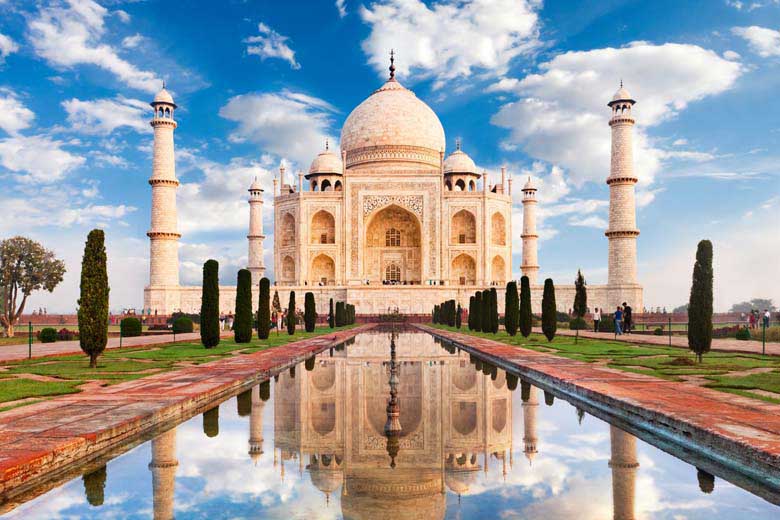
Golden Triangle Vacation Tour
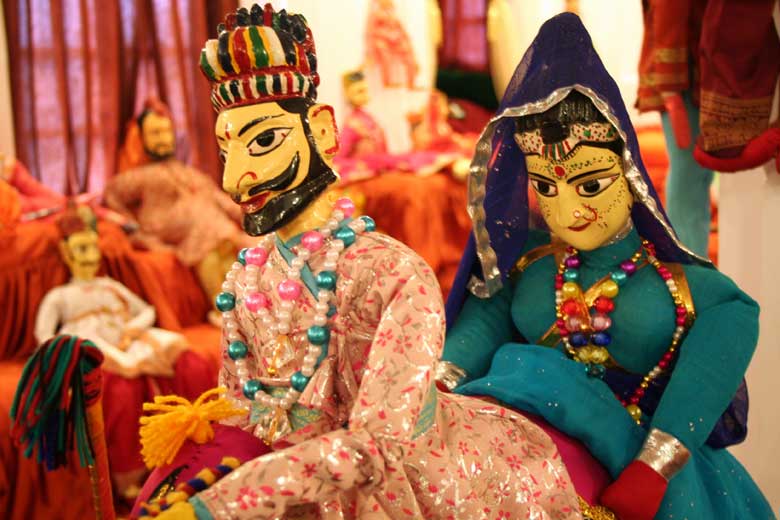
Rajasthan colorful Tour
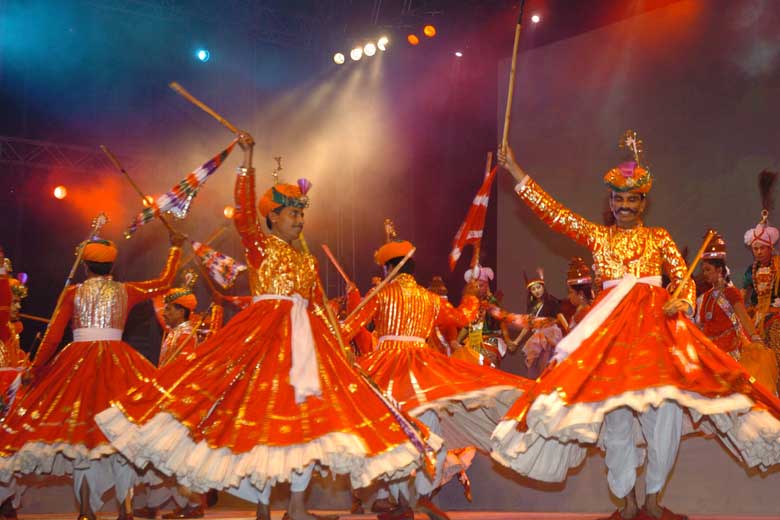
Rajasthan Cultural Tour
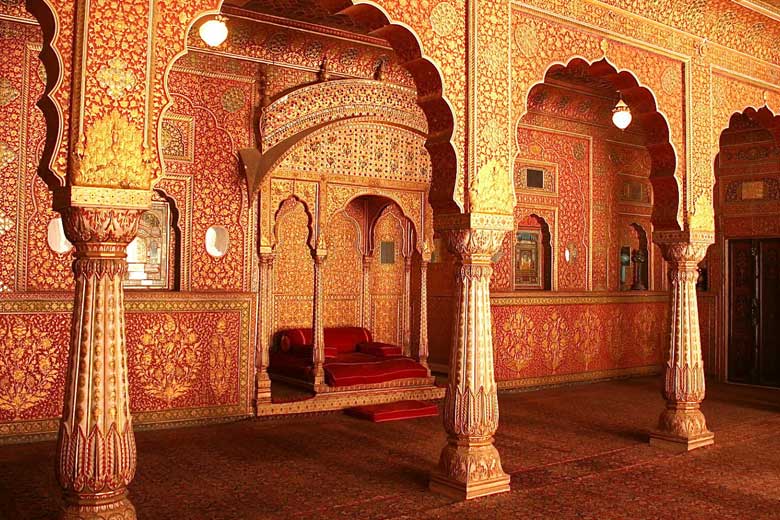
Rajasthan Fort & Palace Tour
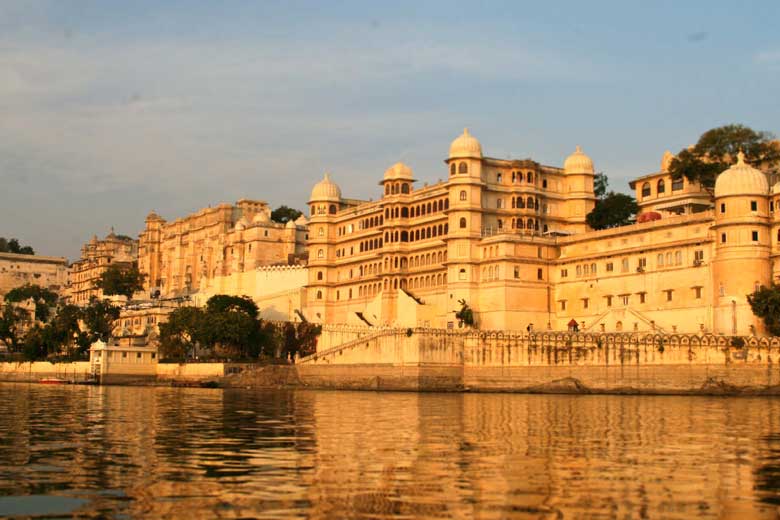
Rajasthan Heritage Tour
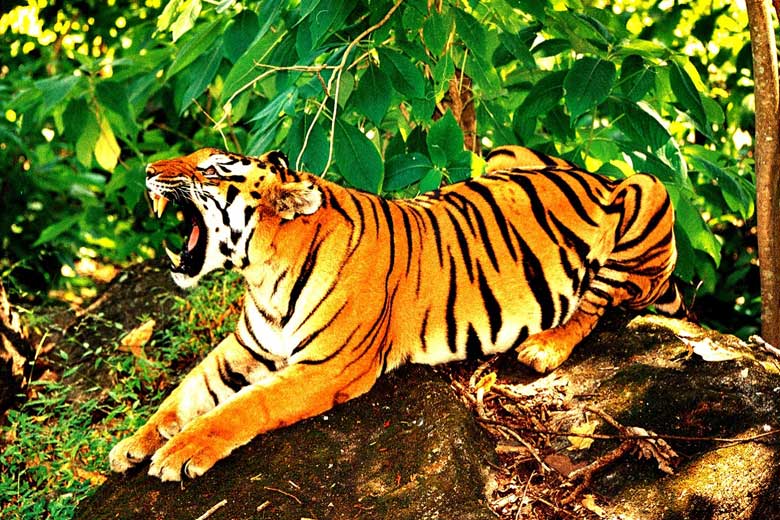
Rajasthan Wildlife Tour
MOST POPULAR PACKAGES

6 Nights / 7 Days
Golden Triangle Vacation Tour
India’s golden triangle is a tourist circuit which includes: Delhi, Agra (including the Taj Mahal), and Jaipur. These trips usually 7 days and do the trip as a circuit starting and ending in Delhi.
View Package
16 Nights / 17 Days
Rajasthan colorful Tour
Coloruful Rajasthan Tour is one of the most popular circuit of India. This tour package accommodates you to endure Rajasthan in all its different colors.
View Package
10 Nights / 11 Days
Rajasthan Cultural Tour
The Rajasthan state represents an unusual diversity in all its forms - people, culture, customs, costumes, cuisine, dialects and music and haveli's.
View Package
12 Nights / 13 Days
Rajasthan Fort & Palace Tour
Rajasthan is famous all over the world for its stunning forts and palaces that have been gloriously standing since decades in this princely state.
View Package
11 Nights / 12 Days
Rajasthan Heritage Tour
Rajasthan known as the "land of kings"provides some marvelous marks from the history in the form of its forts, palaces, mansions and haveli's.
View Package
06 Nights / 07 Days
Rajasthan Wildlife Tour
The name Rajasthan has a habit of invoking the images of sun-bathed sand dunes of the Thar Desert, the rustic turban and mustache of Rajasthani men and women’s ghagra.
View Package
 Gujarat Toursim
Gujarat Toursim
 IATO -
Indian Association of Tour Operators
IATO -
Indian Association of Tour Operators
 +91-9811175768
+91-9811175768